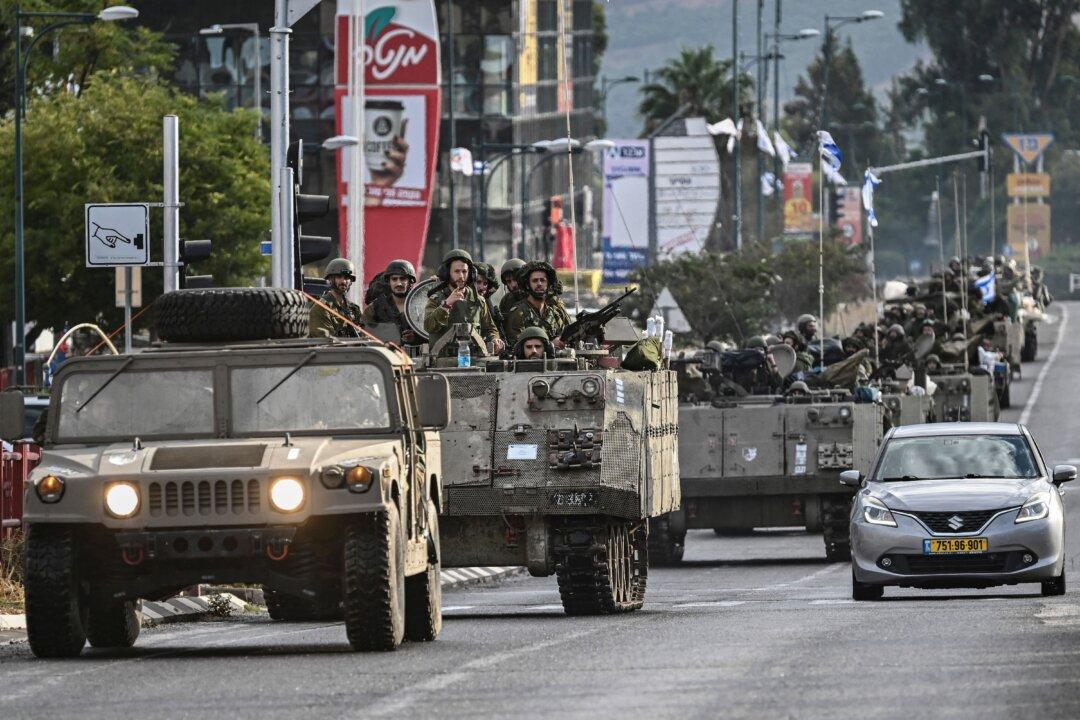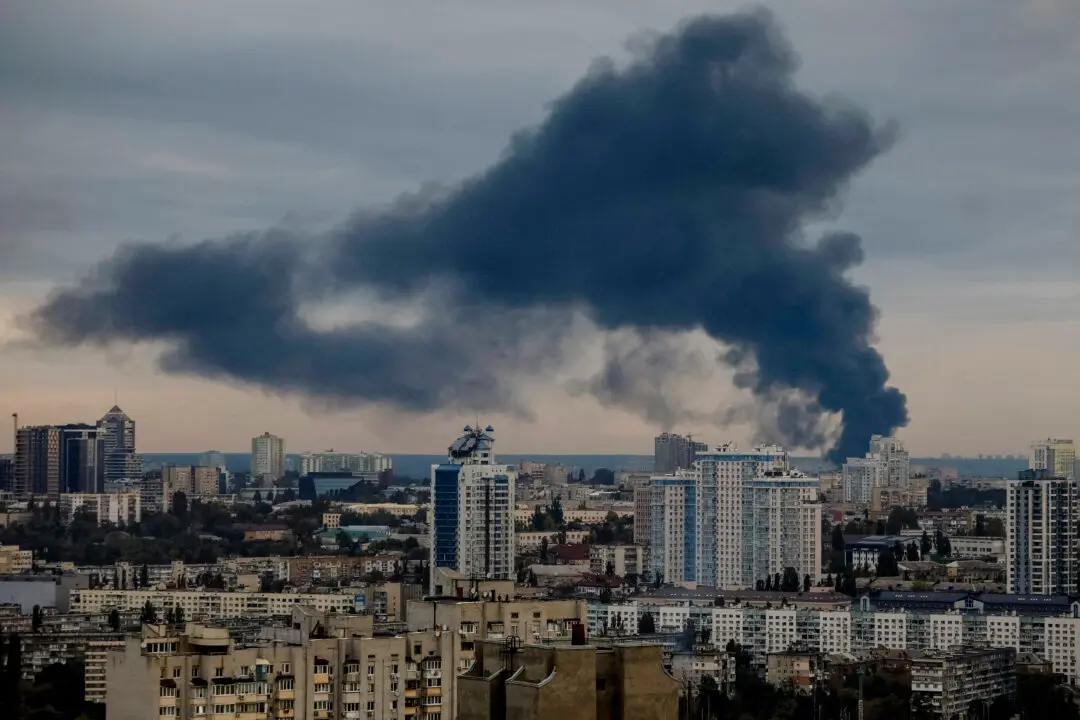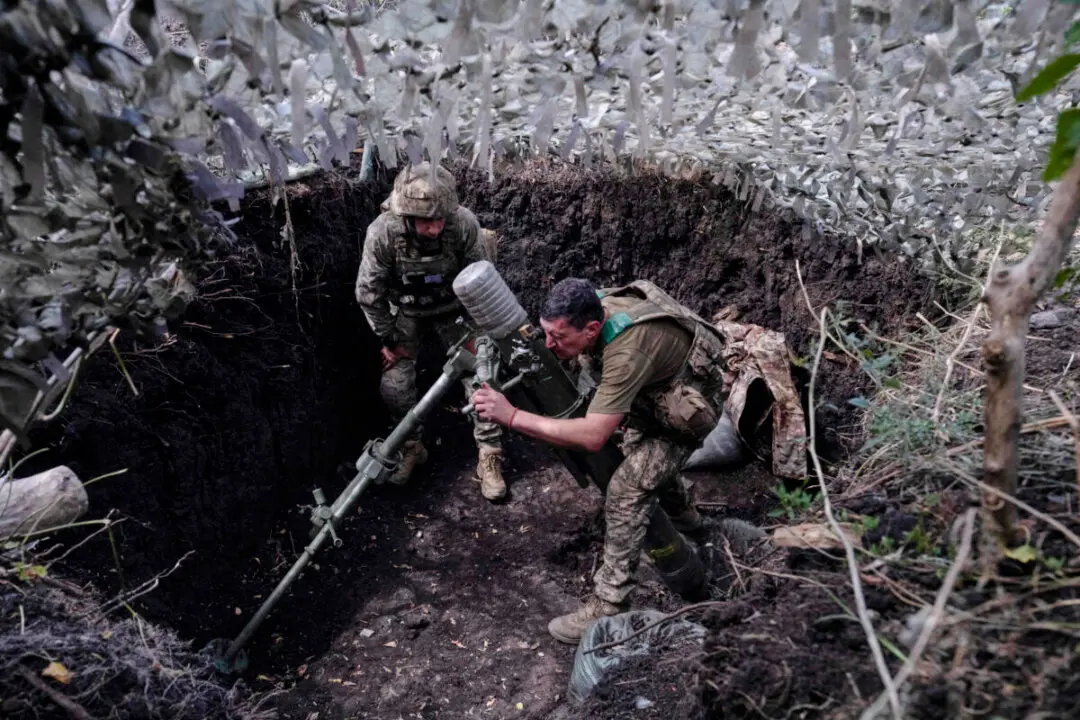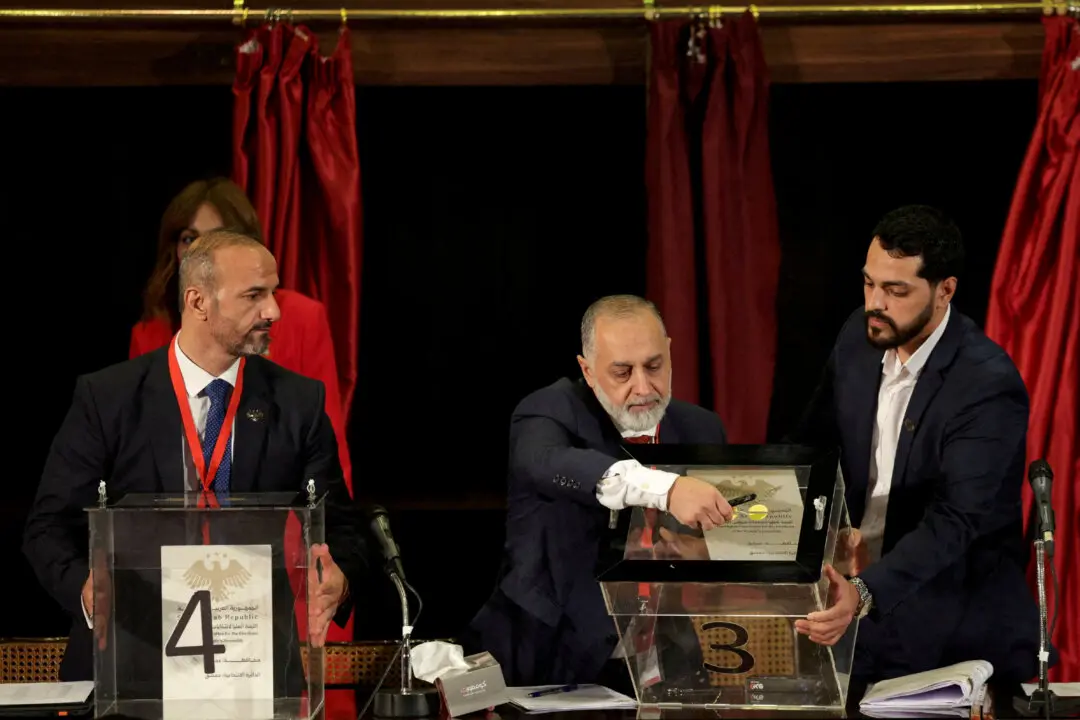Israel says it is striking “military infrastructure” in Lebanon amid escalating cross-border violence between the Jewish state and the Hezbollah terrorist group.
“The Israeli Defense Forces struck Hezbollah military infrastructure in Lebanon in response to shooting yesterday toward Israeli territory,” Israel’s military said in an Oct. 16 social media post.





